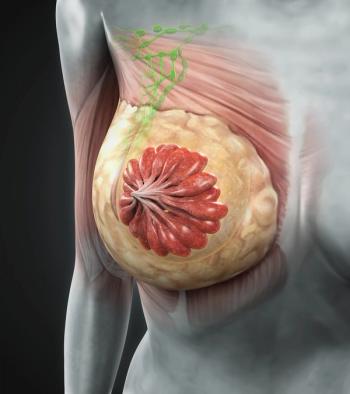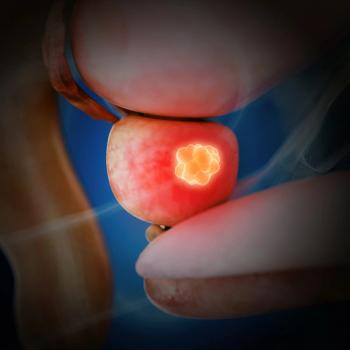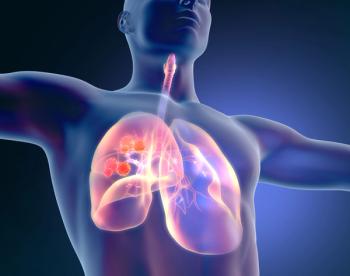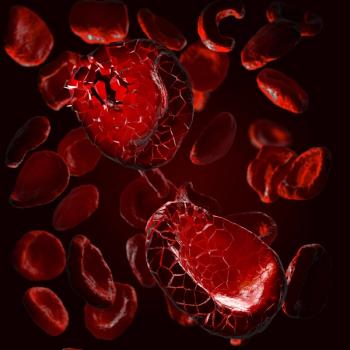
Could Radioembolization Be Added to Chemotherapy for Liver-Dominant NETs?
Micheal C. Soulen, MD, spoke about his presentation on the CapTemY90 trial at the 2025 NANETS Multidisciplinary NET Medical Symposium.
The addition of radioembolization with yttrium-90 to doublet chemotherapy with capecitabine (Xeloda) and temozolomide (Temodar) may result in synergistic efficacy outcomes for patients with grade 2 or 3 liver-dominant neuroendocrine tumors (NETs), according to Micheal C. Soulen, MD.
Soulen, director of Interventional Oncology at the Abramson Cancer Center at the University of Pennsylvania, spoke with CancerNetwork® about his presentation on the phase 2 CapTemY90 trial (NCT04339036) at the 2025 North American Neuroendocrine Tumor Society (NANETS) Multidisciplinary NET Medical Symposium.1,2 Therein, he established that the treatment was well-tolerated, with the combination showing expected toxicity outcomes.
Soulen suggested that embolization was relatively effective and durable for these patients, but that more could be done to enhance treatment outcomes. When discussing the potential to combine liver-directed therapy with a systemic chemotherapy doublet, he noted that toxicity could have been synergistic in the same way that efficacy could be, but that no such circumstance emerged in the phase 2 trial.
Regarding the mechanistic rationale for the combination, Soulen expressed that the idea originated from a desire to treat the liver locoregionally while the medical oncology team treated disease outside of the tumor. The aim, he stated, was to improve response rates, response durability, or some combination of both.
He concluded by highlighting the potential for radioembolization-induced liver disease (RILD) to occur during treatment, despite radioembolization-associated adverse effects (AEs) being uncommon. Although 1 of 21 patients in the phase 1 portion of the study had died due to RILD, no fatal RILD toxicities were reported among 50 patients enrolled on the phase 2 study.
CancerNetwork: Could you provide some background on your presentation of the phase 2 CapTemY90 study?
Soulen: We have been doing [liver-directed therapy] for patients with liver-dominant NETs for 50 years. Those treatments are typically either bland embolization, chemoembolization, or radioembolization, all of which are reasonably effective and reasonably durable. But we are always looking for ways to make them better; to either make them [with a] higher response rate or more durable. A very logical thing to do would be to combine our interventional therapies with a drug or a systemic therapy, where the goal is synergy.
The problem of combining 2 therapies at once is you are firing 2 bullets. That could be bad for the patient in the sense that you essentially expended 1 more bullet than you needed and used a therapy that may have benefited them later in life if you do them sequentially. When you combine 2 things, the most likely outcome is you wasted one of them. They could be additive, meaning that you get the benefit of both at the same time, which would be okay, but the Holy Grail is synergy. [That is] something where you combine them, and they are better than the sum of the parts.
What is the mechanistic rationale for combining locoregional radioembolization with the systemic chemotherapy doublet?
In this particular trial, we were looking at radioembolization, a technique where we instill millions of little radioactive seeds into the liver that get embedded in the tumor. They radiate the tumor from the inside out. Radiation oncologists, for years, have been doing what they call radiosensitizing chemotherapy. If you are doing radiation therapy for your brain tumors, gastrointestinal tumors, [or] any kind of tumor, they almost always give a chemotherapy drug such as capecitabine or temozolomide, which are known to make radiation work better.
Capecitabine and temozolomide is a standard combination therapy in NETs. The idea of combining that with radioembolization evolved very organically out of our tumor board. We had patients who had liver metastases [while] also having disease outside the liver that the medical oncologist wanted to treat. They had a more aggressive histology—maybe a high grade 2 or something where we were worried—where I wanted to treat the liver, [and] the medical oncologist wanted to treat everything else. We said, “Well, why don’t we do it together?”
We came up with this regimen where patients would start their [capecitabine/temozolomide]—which is an oral chemotherapy regimen taken for 2 weeks on, 2 weeks off—and you keep doing that every month for as long as it works, where the patient can tolerate it. They need to do that first to make sure they can tolerate the chemotherapy. [Because] a small number of patients [will not], if you are going to do radioembolization, you first must do a simulation procedure.
They need a catheterization, where we map out their liver. We do a test injection of a harmless nuclear medicine agent. We do a nuclear medicine SPECT scan. In the first month, they get their first cycle of chemotherapy—[we] make sure they can tolerate the chemotherapy, and they get the simulation for radioembolization—[and we] make sure that can be done safely. Then, the next month, on cycle 2, we drop the radioembolization procedure on day 7 of the 14 days of chemotherapy. They get a week of chemotherapy, they get their seeds instilled, and then on the next week of chemotherapy, the seeds radiate their tumors. Then, if you need the other lobe treated, we do that the next month, and then they stay on the chemotherapy every month as long as it’s working and they can tolerate it.
The hope was that by combining the 2, we would get either a higher response rate, more durable control, or both.
How do the toxicity profiles—specifically, hematologic AEs from capecitabine/temozolomide and post-embolization syndrome or RILD—compare to the historical profile of capecitabine/temozolomide alone?
We did the phase 1 study several years ago. Of course, if you combine 2 things, they could be synergistically toxic. They could be too intolerable for the patient. We did a 21-patient phase 1 study, and we demonstrated that it was feasible. Almost everybody was able to complete the regimen as prescribed. The toxicity was additive, meaning we expected toxicity from the drugs and expected toxicity from the radiation, but not worse [toxicity].
The major toxicity you see are cytopenias and drops, particularly [for] the platelet counts. We continue to see more or less what you would expect from the dose of [capecitabine/temozolomide] that they are on. Yttrium-90 toxicities, fortunately, are quite uncommon. Most people have none. The big question we worry about is what’s called RILD, which can happen in anyone who is getting radioembolization. You worry about whether you potentiate that with chemotherapy.
In the phase 1 cohort, we did have 1 patient who died from RILD. That could happen, and in a 20-patient [cohort], you do not know if that’s more [than] you expect. So far, so good in the larger 50-patient phase 2 cohort. It does seem to be pretty much as expected, so [there are] no worrisome signals in terms of toxicity.
References
- Soulen MC, Iyer R, Berman Z, Chauhan A, Thornton L. Multicenter phase 2 trial of Yttrium-90 radioembolization with capecitabine-temozolomide for grade 2 liver-dominant metastatic neuroendocrine tumors: interim report. Presented at the 2025 NANETS Multidisciplinary NET Medical Symposium; October 23-25, 2025; Austin, TX. Abstract 33445.
- CapTemY90 for Grade 2/3 NET Liver Metastases (CapTemY90). ClinicalTrials.gov. Updated September 5, 2025. Accessed November 4, 2025. https://tinyurl.com/5euyvtu4
Newsletter
Stay up to date on recent advances in the multidisciplinary approach to cancer.





















































































